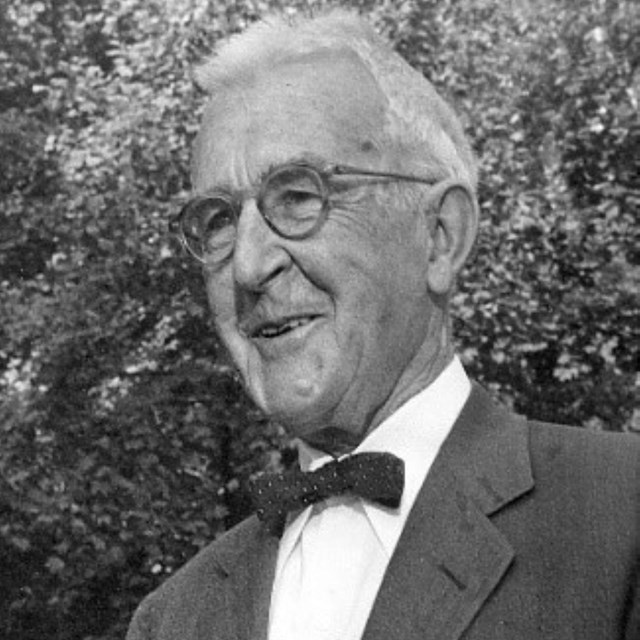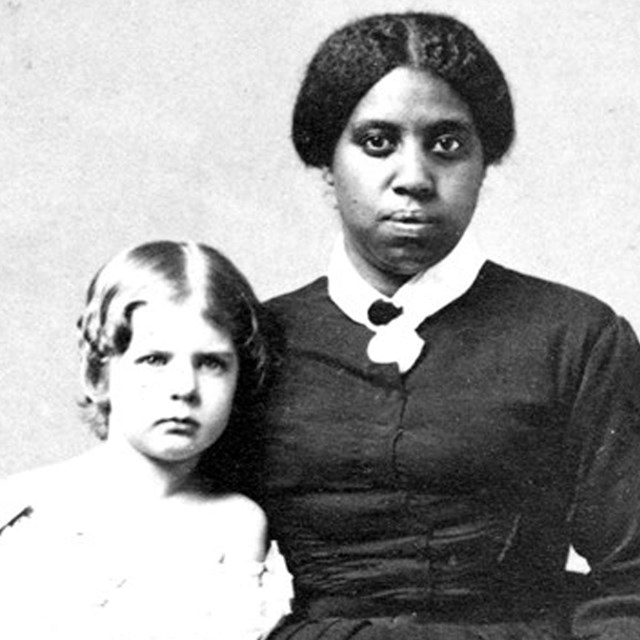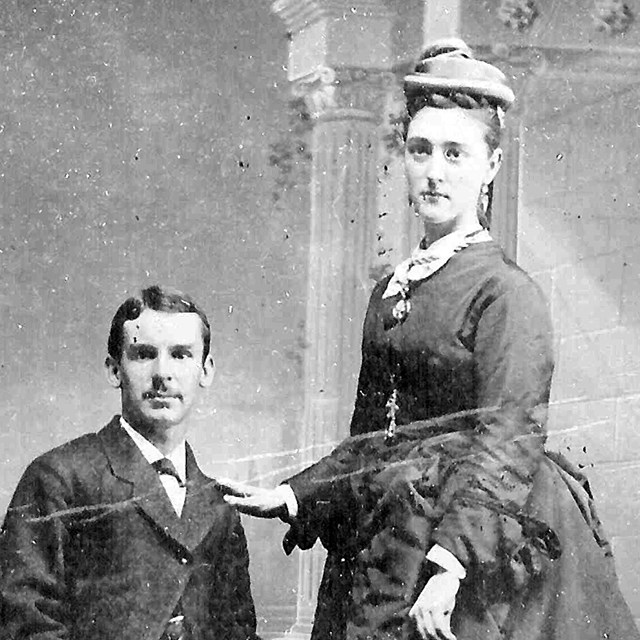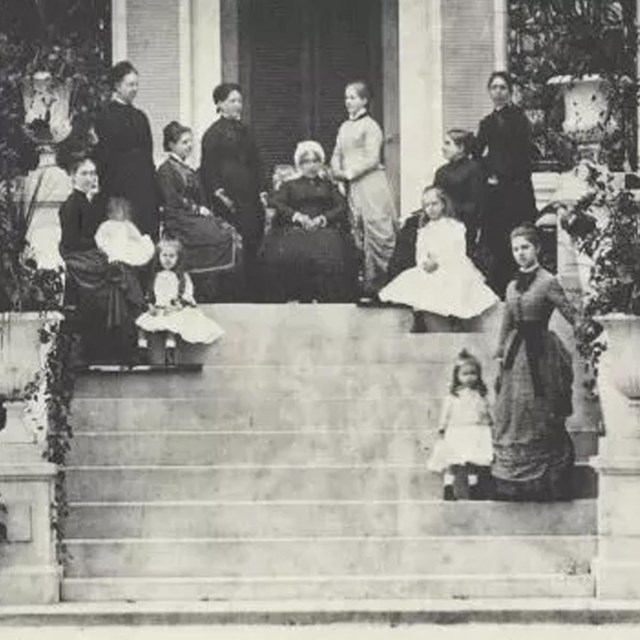
NPS Lillian Mary Ketcham (1908-1996) was born in Norwalk, Connecticut, the only child of Anna Mae Higgins (1887-1947) and Bertrand Olmstead Ketcham (1883-1908). Her father died the year she was born, and her mother remarried Frank B. Fields. She graduated from Norwalk High School in 1925 and pursued a degree in nursing in New York. Lillian Ketcham received her nursing diploma in 1929 and was licensed as a Registered Nurse by the State of New York in 1931. She remained in New York studying for a master’s degree and it was there she met John Ridgely, III. They were married at St. Patrick’s Cathedral on St. Patrick’s Day, March 16, 1935. After their marriage, John and Lillian Ridgely settled in Baltimore, where John Ridgely began working in the printing industry. In 1936, the couple moved into the Hampton mansion with John Ridgely’s father, John Ridgely, Jr., who had been widowed in 1934, and grandfather, John Ridgely of Hampton, known as Captain John Ridgely (1851-1938).
Captain John Ridgely died in 1938, and in 1940, John Ridgely, Jr., married Jane Hartman Rodney (1902-1978). At that time, John and Lillian Ridgely moved from Hampton mansion to the Hampton Farm House, a late 18th-century structure on the estate that had served chiefly as a farm overseer’s or tenant farmer’s residence. Plumbing, electricity and other modern amenities had been installed in the Farm House in the early 20th century, but John and Lillian Ridgely were the first Ridgely family members to occupy that house for several generations. They left it in 1942, when both of them joined the armed forces to serve in the war effort.

NPS Lillian Ridgely joined the Army Nurse Corps in 1942. From 1943-1946, Lillian was stationed at Regional Hospital Station at Keesler Field, Biloxi, Mississippi, a very large base which was a site for the US Army Air Force Technical Training Command and Emergency Rescue School, established in 1941. The Latin motto of the Technical Training Command was Sustineo Alas, or “I sustain the wings.” At Keesler, Lillian treated wounded US soldiers and airmen, but also allies from foreign countries such as France and China. Medical personnel formed strong bonds in difficult circumstances, as seen in the photo of Lillian with two doctors by Keesler barracks and the silver porringer given by colleagues in 1945. Promoted to First Lieutenant by the war’s end, Lillian earned a meritorious service ribbon. Noted for her humor as well as her nursing skill, she awarded herself the handmade medal for fighting the “Battle of Keesler,” depicting the “weapons” related to her work: syringes, thermometers, pens, mops, and hot water bottles. 
NPS John and Lillian Ridgely returned to Baltimore after the war, where they built a house, Spring Hollow, at 710 Hampton Lane on a portion of the Hampton Farm Property. John Ridgely, III, resumed working in the printing business for Arthur Thompson and Company, from which he retired about 1980. Lillian Ridgely pursued her avocation, horticulture. She was a charter member of the Town and Country Garden Club and very active in other local and regional garden club activities as well. In addition, she became a highly-respected wildflower photographer, exhibiting her photographs and giving lectures around the country. In the late 1950s, she produced a catalog of Maryland flora that became a standard reference guide for environmental preservation groups. After Hampton became a National Historic Site in 1948, John and Lillian Ridgely strongly supported the Society for the Preservation of Maryland Antiquities (SPMA) and the National Park Service (NPS) in their efforts to preserve the estate and tell its story. Mr. and Mrs. Ridgely donated numerous Ridgely family artifacts to Hampton NHS, identified persons in old photographs, related their memories of life at Hampton, and supported the fundraising and publicity activities undertaken by the SPMA and the friends group that developed later from it, Historic Hampton, Inc, on behalf of Hampton. In 1980, after the death of Jane H. R. Ridgely, John Ridgely, III, and the other heirs of John Ridgely, Jr., sold the Hampton Farm House and surrounding 14 acres with former slave quarters and other farm buildings to the National Park Service to become part of the Hampton National Historic Site. The couple had no children. John Ridgely, III, died in 1990, and Lillian K. Ridgely died in 1996 Individuals
Learn More
|
Last updated: August 13, 2024








